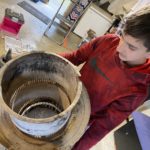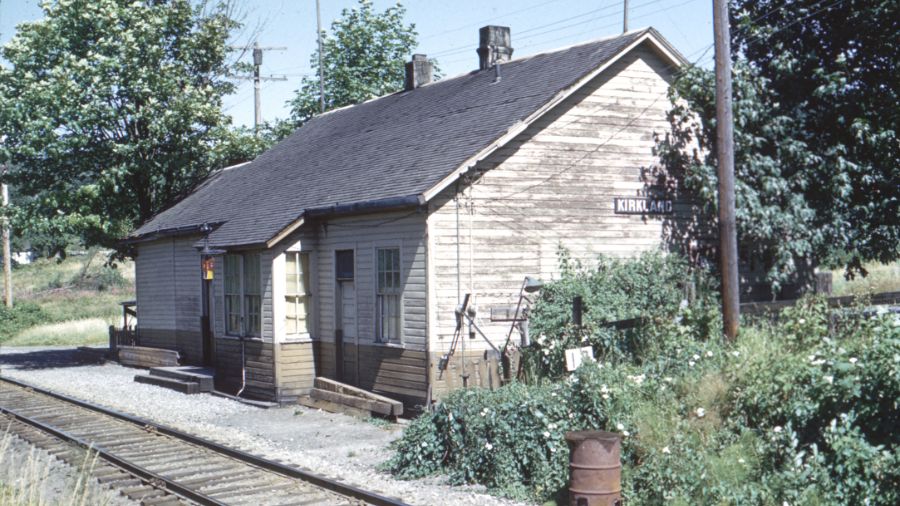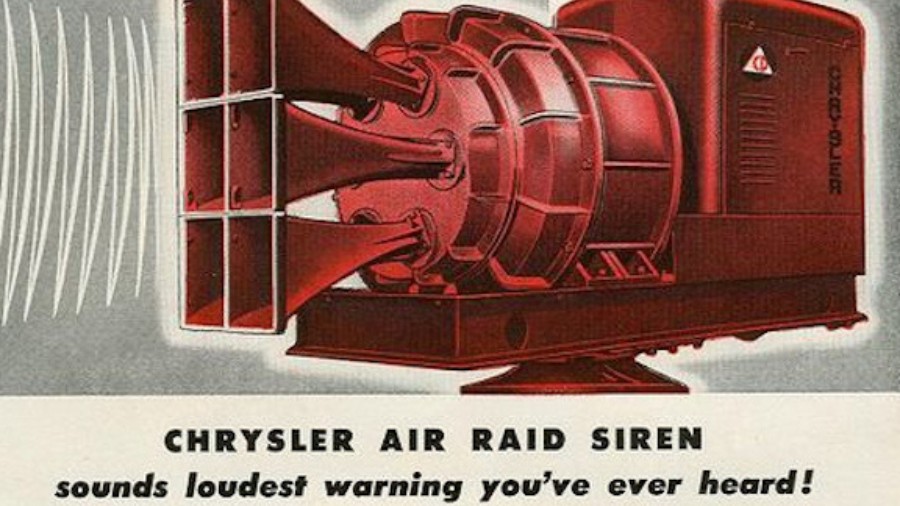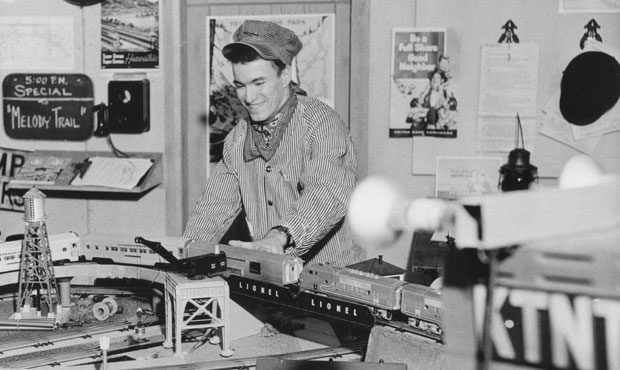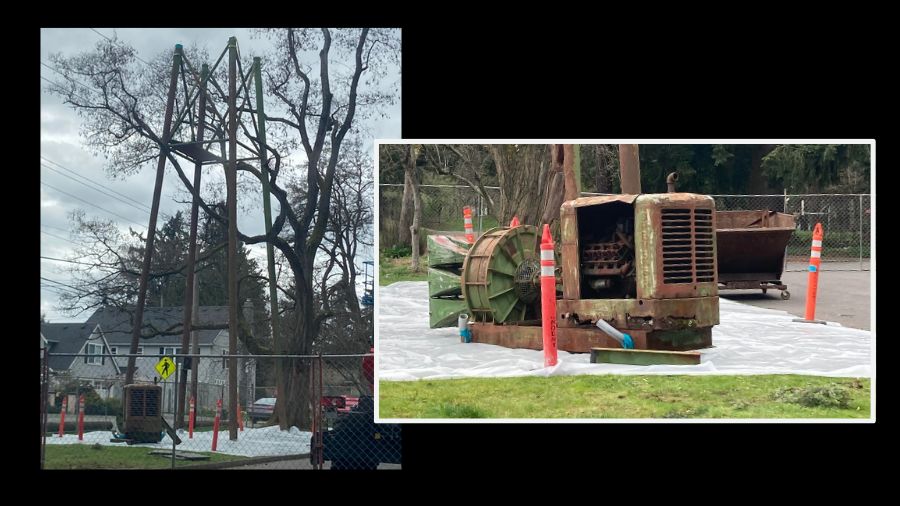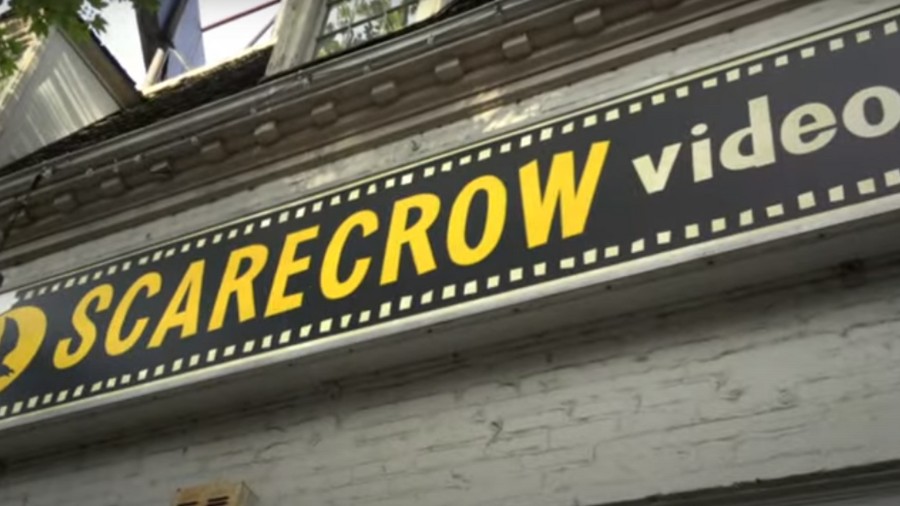Forgotten World War II air-raid siren rescued by Seattle high school student
Mar 1, 2023, 8:11 AM | Updated: 1:28 pm
An air-raid relic from World War II and the Cold War was recently rescued from where it had perched high above a Seattle street for nearly 80 years. The rescuer was a local high school student who’s now working to restore the orphan artifact to working condition and donate it to a museum.
Back in the days leading up to World War II, the City of Seattle Engineering Department got ready for possible enemy air attacks by installing dozens of sirens around the city. Many were made by the Federal Electric Company of Chicago, Ill., including the “Model 2” recently rescued by Blanchet High School student Nathan Veress.
More from Feliks: So long to Cal Worthington and his dog Spot
What does an 80-year-old “Federal Electric Model 2” look like?
Just ask 15-year-old Hawthorne Hills resident Nathan Veress, who now has the siren in his garage where he’s working to restore it.
“It looks like probably about like two and a half feet tall, maybe a foot wide,” Veress told KIRO Newsradio. “It’s got an outer shroud that covers the whole motor, the motor stands on three legs. The outer shroud is like a cylinder, and it has three different roof things coming off of it.”
Throughout most of World War II, the sirens throughout Seattle were tested briefly every Wednesday at 12:15 p.m. If an air attack had come, the sirens would have warned Seattleites to take cover.
By June 1944, not long after D-Day, tests were scaled back to the only first Wednesday of every month. Most of the sirens were removed after the war ended, but a few remained well into the Cold War.
Nathan Veress has loved history and artifacts, especially vintage military stuff, for as long as he can remember. A year or so ago, he offered to restore an old rooftop siren that he had noticed at Sand Point – atop the old Navy fire station at what’s now Magnuson Park. Since that fire station and that siren are considered part of the historic landmark, Nathan’s offer was turned down.
But he was not deterred. Veress remembered being out riding his bike, not far from his family’s Hawthorne Hills home, where he had noticed a solitary forgotten siren high on a utility pole. It’s not clear why the old siren, near Laurelhurst Park and Laurelhurst Elementary School, was still there. It likely hadn’t been used since World War II, or perhaps in the 1950s or early 1960s during the height of the Cold War.
Veress did some research. He learned that for an old siren from World War II to still be attached to a Seattle utility pole in 2023 – more than 80 years after it was first installed – was pretty rare.
“All the ones got put up in World War II, there’s a big list … and they took down probably around 95% of them right after [the war in] 1946,” Veress said.
Why does Nathan Veress think this one particular siren was still sitting there, undisturbed, near Hawthorne Hills nearly 80 years later?
“I don’t know,” Veress said. “Luck?”
“Probably the inertia,” Nathan’s dad Alex Veress added.
Alex Veress is a history buff, too, who, like his son, also has a particular interest in military history. It runs in the family; his parents escaped from Hungary during the revolution in 1956, and so they have always paid close attention to world events and to history.
With the old Laurelhurst siren in his sights and with the aim of restoring it, Nathan got permission from Seattle City Light to take possession of the old siren. In late January, a company called Cannon Constructors donated their crew’s time and equipment – including a couple of bucket trucks – to carefully remove the siren and put it in the back of Nathan’s dad’s pickup.
From the photos Nathan shared, it’s perhaps easy to see why the old siren was forgotten or at least overlooked on its perch high up on the utility pole. It was pretty rusty, and it blended in with the other poles as well as the wires and transformers typically seen at that height.
With the siren now safely tucked into the Veress garage, it’s that rust which is now the object of most of the restoration efforts.
“What we’ve done so far is basically take a wire brush and sandpaper, and we’ve had to get all the rust off of that,” Nathan Veress said. “We’re still in the process of doing it. And you’ve got a bunch of like small cracks that you’ve got to basically put rust remover on. We’re going to sandblast it … and then use primer, and then we’re going to paint it.”
What color? Nathan’s not sure, but he’s hoping to find color photos from World War II of similar sirens. It may have been bright yellow, or it may have been red.
Along with the cosmetic work, the next big step is getting the heart of the siren – the electric motor – reconditioned, which will likely cost about $1,500, and which is work that only a specialized company in California can do.
As to the future of the siren, once it is fully restored, Nathan Veress is a discerning guy. He really wants this World War II and Cold War artifact to find a home in a local museum, but he wants it to be on display – not tucked away someplace in storage.
“If I’m restoring it, I really then don’t want it to sit in a warehouse where other people can’t see it because that’d be not great,” Veress said. “Because if you’re going to donate it to a museum like the Museum of History & Industry or the Museum of Flight … the chances are really high that it’s going to sit in storage, and no one will be able to see it, and understand it.”
Nathan ultimately chose the Flying Heritage & Combat Armor Museum at Paine Field. That museum has had a bit of a rollercoaster ride lately.
The collection of flyable planes was sold by Paul Allen’s estate, and it reportedly was going to be moved to Arkansas – but those plans have apparently changed, and the collection and museum will now remain in Everett. The museum is closed right now, but officials there told Nathan they’d love to have the siren to display, especially because they have a Cold War exhibit coming up.
One key factor in all of this is Seattle City Light. They own and maintain all the utility poles in Seattle, including the one this siren lived on – and they don’t get requests like this very often, if ever. For some reason, the siren project all moved along really quickly.
Jenn Strang, the spokesperson for City Light, says Nathan Veress gets all the credit.
“He is a very persistent young gentleman,” Strang told KIRO Newsradio. “And actually, I will say, when I was talking to the program managers who were involved in this, they were actually surprised when they initially met him because they thought they were talking to an adult.
“He’s very well-spoken, very eloquent in his request and his emails,” Strang continued. “And so, when they were actually finally meeting him, they were very surprised.”
Nathan Veress’ goal is to complete the cosmetic restoration and get the motor reconditioned – so the siren will be operable – by around sometime this summer.
Veress understands that the siren is so loud it’s unlikely to ever be fired up at the museum at Paine Field. So, why go to the trouble and expense of restoring the electric motor?
“I figure it’s like you’re going to donate it to a museum, you might as well have it in the best shape possible because it’s going to be there for the rest of its life,” Nathan Veress said. “And you know, if the chance of running it one last time happens, I’m not gonna say no.”
Nathan’s dad Alex joined in the conversation.
“There’s one other reason,” Alex Veress said. “And that is at the Flying Heritage Collection, they restore planes to [being] flyable. So in keeping with what they do, we can’t give them something that doesn’t work.”
If you’d like to support Nathan Veress’s effort to restore the old air-raid siren, the family has set up a modest GoFundMe campaign.
You can hear Feliks every Wednesday and Friday morning on Seattle’s Morning News with Dave Ross and Colleen O’Brien, read more from him here, and subscribe to The Resident Historian Podcast here. If you have a story idea, please email Feliks here.




